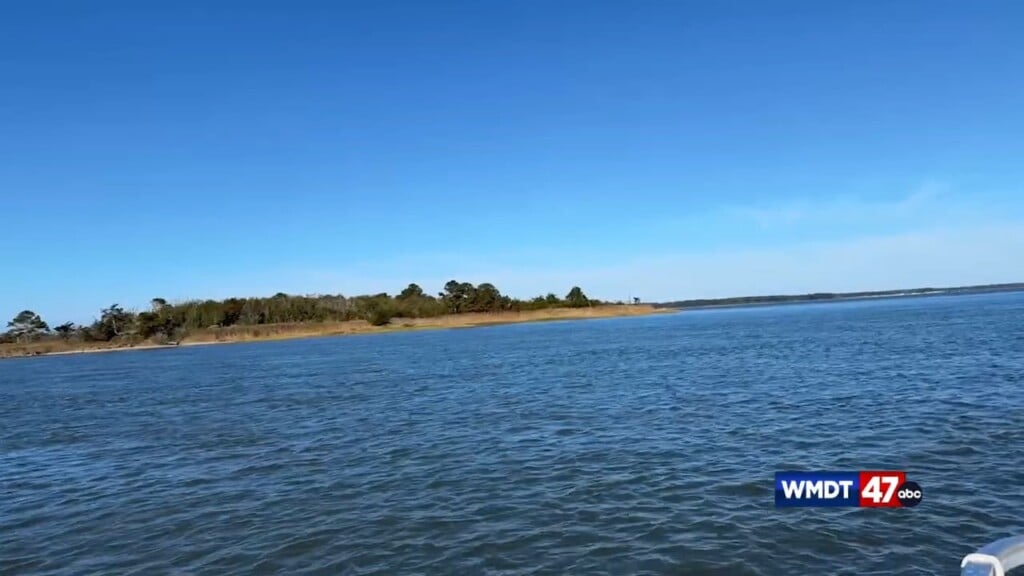Live Green: Delmarva Discovery Museum
POCOMOKE, Md – The Delmarva Discovery Museum has a variety of animals while also displaying the history of Delmarva, but the stars at the museum are their otters, Mac and Tuck.
“So Mac and Tuck came to us in 2016 from Louisiana Crawfish Farm that they decided to make their home. They thought they had made a very wonderful life decision because of course, it was a crawfish buffet every day that they were having,” Museum Curator, Taylor Griffith explained, “Unfortunately, the farmer did not like it as much, so he contacted the USDA. They sent a chopper down, tracked these guys, they evaluated them, and they were deemed to use as educational species.”
Now, Mac and Tuck call the museum home, and they are spoiled. Being fed a delicious diet consisting of capelin, smelt and pepperoni sticks. Taylor walked me through a typical day with the otters.
“We usually get in here at 8:30, we will grab our cart, have new towels on there, grab their fish for the day. They are the first animals that we feed because if we do not feed them first, they are going to make it known,” She said. “They like to do different vocalizations and they will usually do like a high pitched screams. Tuck will do a sigh if he thinks that we’re taking too long.”
Since the otters are semi-aquatic, they have a dry side and a wet side. Their wet side is an aquarium that holds six-thousand gallons of water, so daily water quality testing is a must. They test for things such as pH, chlorine and boring levels – all important for an otter’s health.
“One staff member will feed them while the other staff member fully cleans their dry side that we have on the other side that gets cleaned every day and then we repeat their feeding at noon.” Taylor shared, “If we’re closed to the public, they get fed back in their kennels. If we are open to the public, at noon, we do a public otter feeding.”
The museum’s public feedings are important because that gives the staff an opportunity to educate the public about the otters’ history and their ecological importance.
“Allegheny County and Garrett County, they kind of hunted their otters to extinction over there and they saw the effects were not good for those otters to be out of those ecosystems. So, they actually came over here in 1990s and trapped otters in the Eastern shore and relocating on that,” Taylor said. “There is more strict hunting regulations now.”
American river otters can be found from Canada down to Rio Grande, as well as Delmarva. Unfortunately, due to habitat loss and other threats affecting surrounding ecosystems, otters are forced to relocate. Taylor stressed in order for otters to stay local, we must keep the waterways clean.
“One way to help the otters is to limit your pollution that you’re putting out, especially into the waterways.” Taylor explained. “So, that’s the key to not use as many chemicals or fertilizers because that all leaks into our waterways and to our watersheds, and that stuff causes pollution, and that causes otters to end up moving into a different area.”
Besides fertilizer, Taylor encouraged everyone to dispose of any trash properly so it does not get into the waterways.
She also advised, “Leave your plants along the riverbanks because otters will use that as a way to camouflage. That’s not just helping out otters, that’s helping the other animals that live along the river banks as well.”
To see the otters during their public feedings, or to stay up-to-date on their events, visit the museum’s website.


